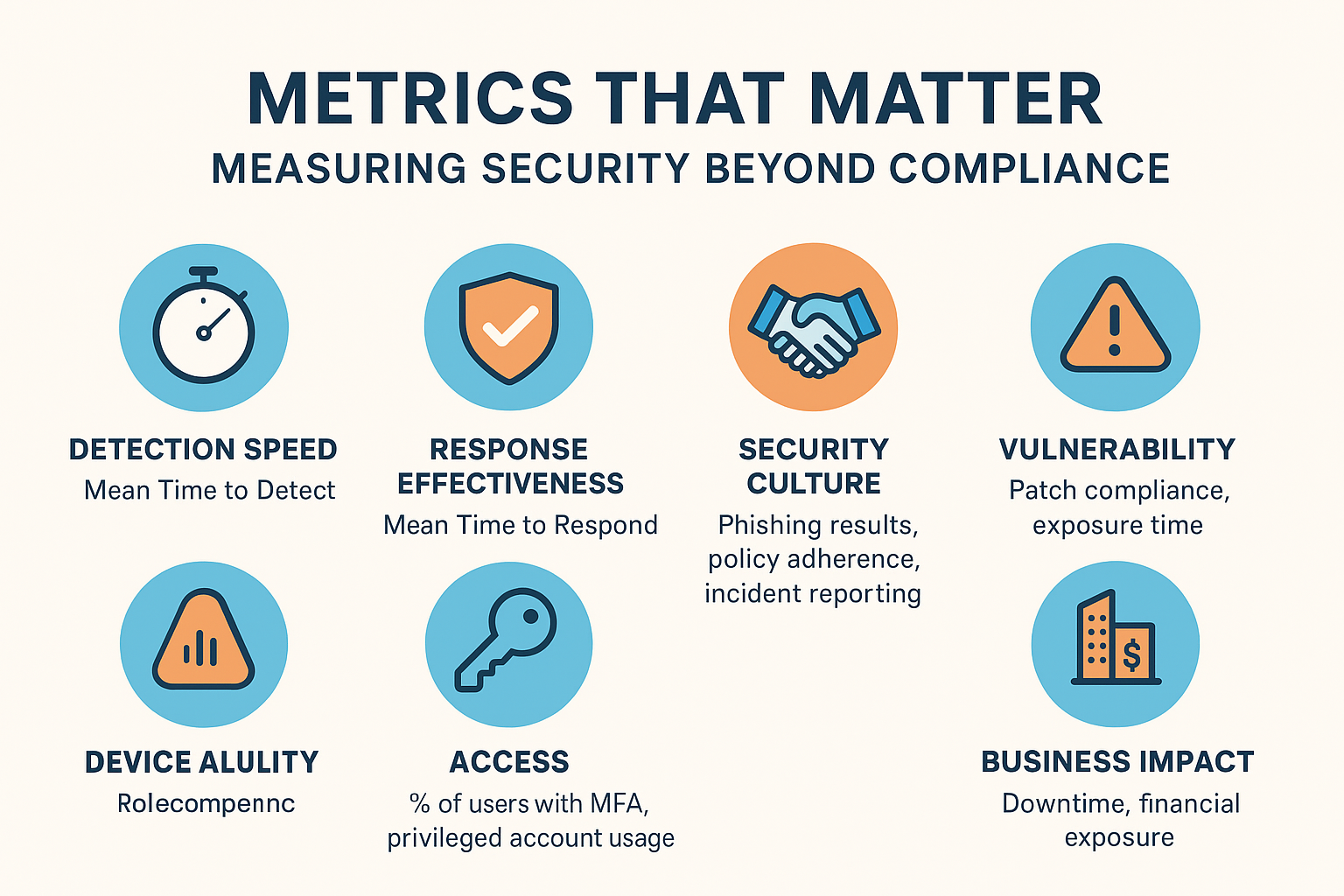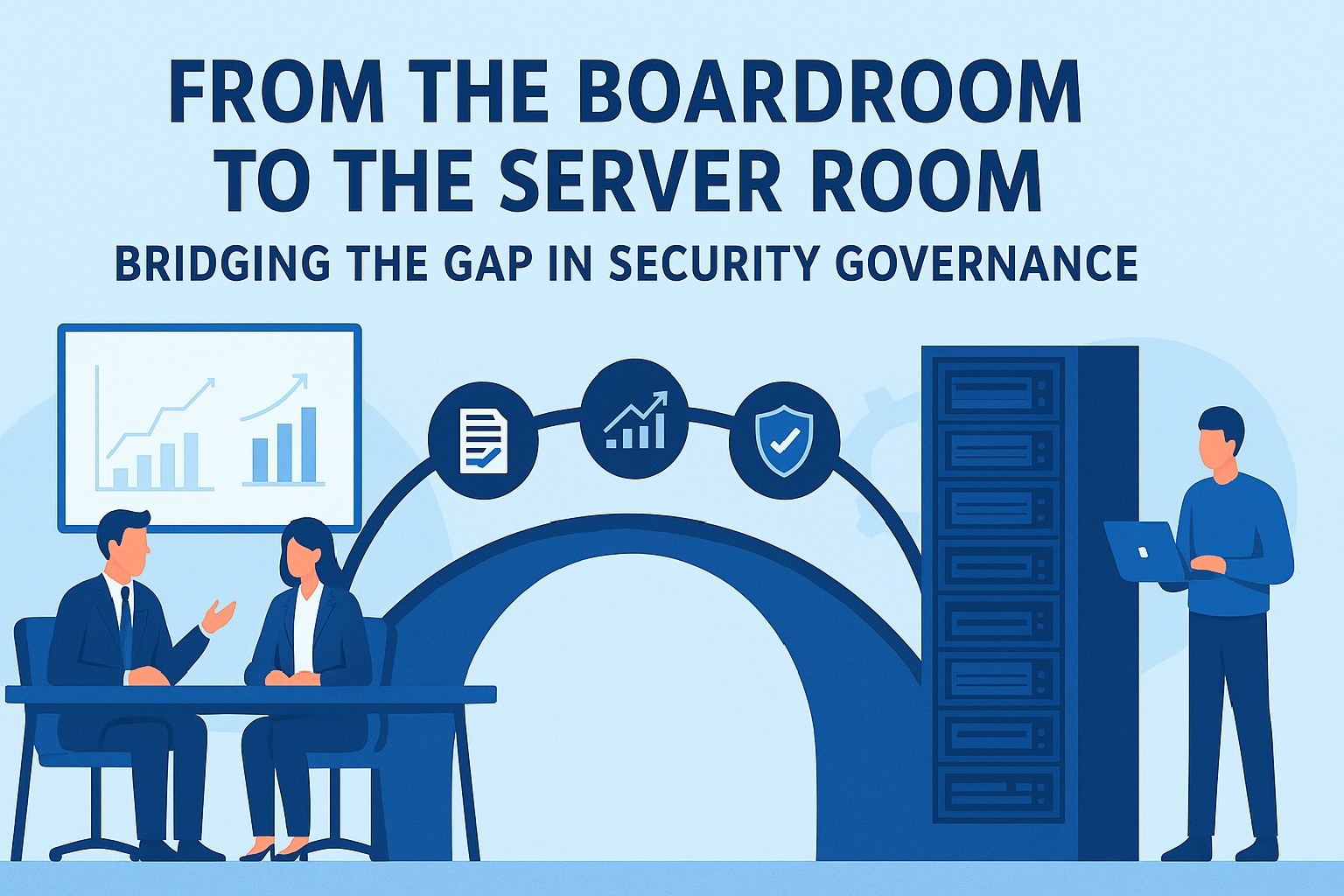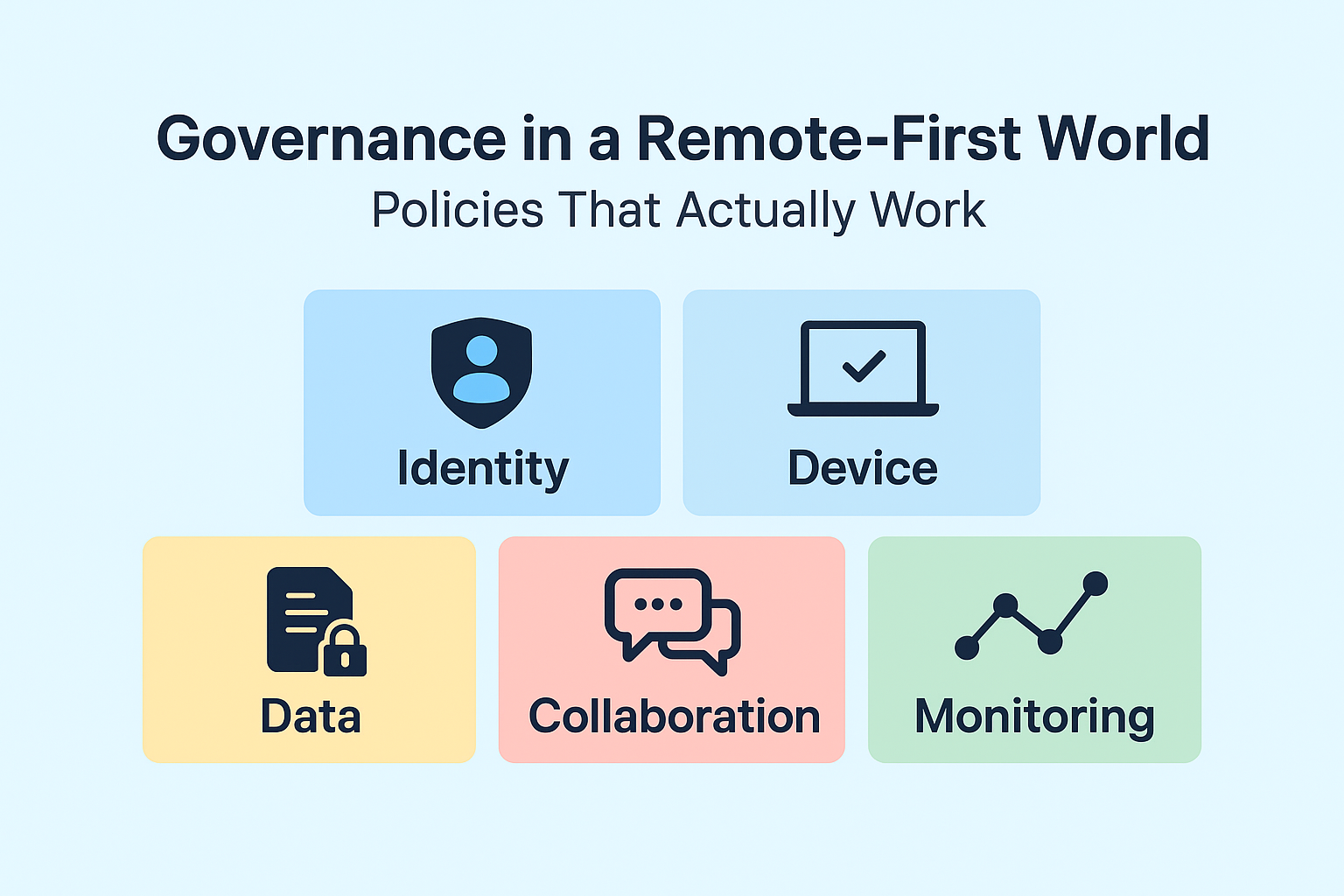
Post Review: Many organizations still report compliance as their main cybersecurity metric. This post reframes the conversation: what should we actually measure to prove resilience and strengthen governance?
Metrics That Matter: Measuring Security Beyond Compliance
Security leaders often face pressure to demonstrate success in numbers. Too often, the numbers presented to executives or the board are compliance-driven: audit pass rates, number of policies signed, or certifications achieved. While useful, these do not tell the full story of resilience. True governance requires metrics that reflect effectiveness, not just existence.
1) Detection and Response Speed
Mean Time to Detect (MTTD) and Mean Time to Respond (MTTR) are core indicators of operational resilience. Faster detection and containment minimize business impact.
2) Incident Containment Effectiveness
Measure how often incidents are contained before spreading laterally. High containment rates show that policies and technical controls are aligned with real threats.
3) Security Culture Indicators
- Phishing simulation results: Click rates, report rates, and time to report.
- Policy adherence rates: Not just acceptance but observed compliance in workflows.
- Self-reported incidents: Whether employees feel safe raising security issues.
4) Vulnerability Management Metrics
- Patch SLA compliance: % of high-severity vulnerabilities remediated within SLA.
- Exposure time: How long systems remain exposed before mitigation.
- Recurrent vulnerabilities: Issues reintroduced due to poor process alignment.
5) Access and Privilege Management
- Inactive accounts: % disabled/removed within a set period.
- Privileged account usage: Frequency, duration, and justifications logged.
- MFA coverage: % of systems and users protected with strong authentication.
6) Business Impact Metrics
Translate technical metrics into business outcomes: downtime prevented, financial exposure avoided, regulatory fines mitigated, and customer trust preserved.
7) Governance Maturity
Use maturity models (such as NIST CSF or ISO 27001) to benchmark progress. Show growth in capability, not just compliance status.
Conclusion
Compliance answers the question: “Are we following the rules?” Governance metrics answer: “Are we truly secure and resilient?” Leaders who adopt meaningful metrics elevate the security conversation from box-ticking to value-creation.

